Post by Kaine Australis on May 18, 2022 6:42:15 GMT -8
-Alor-Class Battleship-
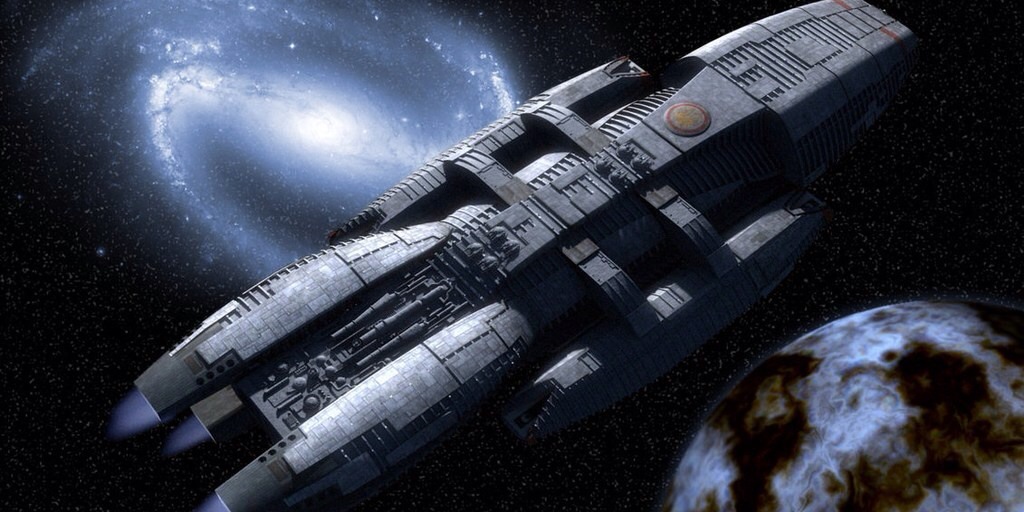

Ship Class: Light Star Destroyer
Ship Role: Pocket Battleship
Ship Length: 1300 meters
Agility (A): 1
Defensive (D): 5
Offensive (O): 5
Speed (S): 1
Special Gear: 1 Hangars
Description:
HANGAR
Up to 96 fightercraft and 144 drop pods
Up to 800 Troops
Port Hangar
3 Squadrons of Starfighters, Bombers, or Gunships
1 Squadron of Shuttles or Dropships, or 3 Individual Light Freighters
Starboard Hangar
3 Squadrons of Starfighters, Bombers, or Gunships
1 Squadron of Shuttles or Dropships, or 3 Individual Light Freighters
Ventral Drop Pod Launch Bays
24 Drop Pod Launch Tubes
6 Drop Pods per Launch Tube
ARMAMENT
4 x Bow Mounted Twin Heavy Mass Driver Cannons
70 Super-Heavy Turbolasers
40 Heavy Turbolasers
40 Medium Fast-Firing Flak Cannon Batteries
20 Light Fast-Firing Flak Cannon Batteries
10 Medium Ion Missile Batteries
5 Heavy Tractor Beam Emitter Batteries
5 Pressor Beam Emitter Batteries
12 Forward Facing Assault Grade Flex-Tube Launchers
6 Port-Prow Assault Grade Flex-Tube Launchers
8 Port-Prow Ion Missile Tubes
2 Port-Prow Medium Fast-Firing Flak Cannon
6 Starboard-Prow Assault Grade Flex-Tube Launchers
8 Starboard-Prow Ion Missile Tubes
2 Starboard-Prow Medium Fast-Firing Flak Cannon
8 Port Assault Grade Flex-Tube Launchers
6 Dorsal-Port Assault Grade Flex-Tube Launchers
2 Dorsal-Port Medium Fast-Firing Flak Cannon
6 Dorsal-Starboard Assault Grade Flex-Tube Launchers
2 Dorsal-Starboard Medium Fast-Firing Flak Cannon
8 Starboard Assault Grade Flex-Tube Launchers
NON-COMBAT ATTACHMENTS
Thermal Deflector Shielding
Standard Long-Range Sensor Suite (HSI/DER/EPR/AS)
Advanced TAT and BAC Suite
PED-21 Distress Beacon
Encrypted Communications Systems
Comm Laser
Comm Unit Scrambler
Comm Wave Descrambler
Ion-Scrambler
Ranger Transceiver
Subspace Monitor
IFF Transponder
Advanced Navigational Systems
Multiple Ion Drives
Inertial Compensators
Repulsorlifts
Seeking to expand the range of Capital Ships available to the Mandalorian Clans, MandalArms boss Kaine Australis, chief of R&D Yomaget, and their longtime associate Mandal Hypernautics CEO Rygel Larraq initiated plans for a joint Mandalorian venture to create a line of supercarrier Flagship for each of the clans. Drawing upon years of naval experience and a mountain of engineering achievements, Larraq's initial design concept rapidly evolved away from attempting to duplicate previous engineering marvels and instead became a powerful new ship of the line that could also serve as a devastating breakthrough weapon. Despite Kaine's involvement, the presence of Larraq muted his interference, much to Yomaget's endless relief.
Called the Alor-class, this new classification of Dreadnought would marry advanced metals with the durable structural design and advanced electronics of modern warships to a frame reminiscent of ancient and reliable Mandalorian ship designs. The Alor class borrows the side-hangars of ancient Mandalorian flagships, the heavily armored prow of the Kandosii, the brawling armament of the Keldabe, and a compartmentalized hull.
Tough and powerful, in times of old, an Alor-class Dreadnought might be the sole property of a single clan. Though not every clan has the resources or training to operate an Alor-class warship, some clans might be capable of fielding multiple such vessels. Each of these massive ships would serve as the flagship of an individual clan. Each Alor-class Dreadnought can be built-to-order at the request of a clan's Chief. As such, there will come, in time, a number of variations between individual warships. Though this is typically shown in minor variations between weapon placements and electronics, Alor-class Dreadnoughts can have significant alterations made to them. There is scope for between four and eight primary ion drives, and from two nacelle hangers, up to four extra large hangers. Though this provides little in the terms of tactical variation between ships, it allows every Chief capable of doing so to ride into battle upon a warship that symbolizes the fury and will of his or her clan.
Hangars, Squadrons, and Launch Mechanisms
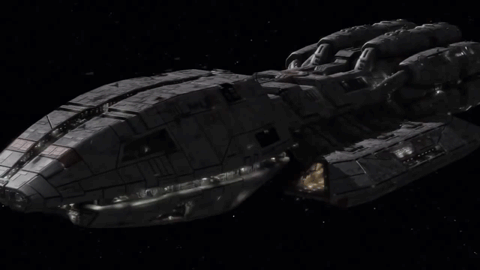
A key component of the Alor-class design is a pair of port and starboard nacelle hangars. These hangars retract when engaging in hyperspace travel or when engaged in heavy combat. When retracted, the fore and aft of each hangar is sealed behind the main hull at the prow of the ship and one of the primary ion drives. Though these nacelle must be extended to allow for individual fighters to return and land, entire squadrons can be launched even while these nacelle are retracted. Built into the exterior edge of the Alor's nacelle are a number of starfighter launch tubes. Built-to-order, each Alor-class Dreadnought is pre-designed with a specific allotment of starfighter, bomber, or gunship squadrons in mind. Three squadrons of starfighters, bombers, or gunships are held in each port and starboard hangar respectively. Regardless of which type of ships the given clan desires to place in these hangars upon ordering their ship, each hangar is designed to allow all three squadrons to launch at once from the built-in launch tubes of each hangar. Any shuttles, dropships, light freighters, or other ships that have docked in each hangar are unable to be launched in this way.
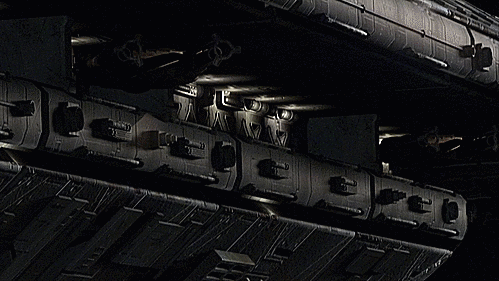
Frame, Hull, Armor, and Bridge
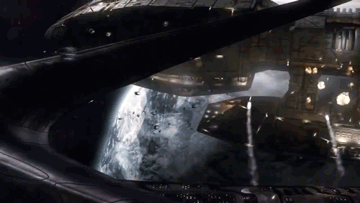
The Alor-class Dreadnought utilizes the durable Mandalorian Iron as a primary component of its construction. This durable material allows the ship to be tougher and more resilient than some other ships of its size.The ship utilize a double layering of particularly thick alloy plating upon its hull. Within its hull, the Alor-class makes use of the durable and sturdy metal in a de-centralized, honeycombed frame to ensure the rare and expensive material is best used.
The bridge of the Alor-class rests neither on the dorsal or prow of the ship. Instead, the Alor-class Dreadnought sports an internal bridge in the center of her prow-section. This bridge is a spherical structure that is entirely encased in blast doors. The bridge is physically connected to the rest of the ship by a number of hard-lined systems, including remote cameras, holographic displays, and traditional sensor systems that allow the command staff of the ship to be aware of her surroundings without resorting to looking out a window. While this design was intended primarily to prevent hostile ships from targeting the bridge directly, it also proves capable of preventing most penetrating shots from taking out the bridge, even though it is placed towards the prow of the vessel.
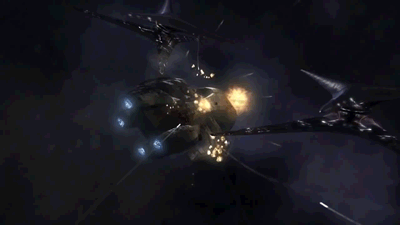
Power and Shield Systems
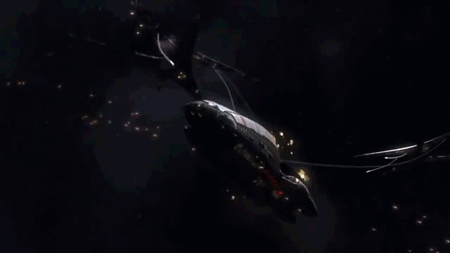
The ship's powerful Isotope-5 Reactor provide the ship's ion drives, shields, subsystems, and weapons with plenty of power. When not in combat, this reactor is used to charge and maintain a number of capacitor banks and emergency power cells throughout the ship. Redundant power conduits run the length and breadth of the ship, allowing for easy rerouting of power past damaged sections of the ship. Compartmentalized life support and artificial gravity localized in each section of the ship allows for safe operating conditions in most of the ship even after the ship herself has suffered critical damages, and prevents boarding parties from sabotaging the life support systems of the entire ship in a single go. Every section of the ship is supplied with local power cells that allow said section of ship to operate for a maximum of 24 hours at low-operational levels or 30 minutes of combat levels, even after being entirely separated from the ship's main power conduits.
The Alor-class Dreadnought utilizes top of the line modern shielding. A double layered shielding system protects the dreadnought, utilizing Retribution Ray Shielding as the initial layer and Thermal Deflector Shielding as the secondary layer. The first layer of shielding is capable of reflecting a portion of of incoming energy attacks back at the firing ship, but offers no protection against kinetic weapons or missiles. The second layer of shielding was fairly strong, even for a ship the size of the Alor-class. This secondary layer of shielding was capable of protecting against energy, kinetic, and missile weapons but also prevented the Alor-class from firing its own weapons. To work around this, the various shield emitters of the ship were tied into the weapons control systems. Every time an individual turret or missile tube fired, a small hole in the ship's shielding opened up directly over the firing weapon. Unless the firing weapon happened to be an energy based weapon, this opening in the ship's shields did not also extend to the ray shielding.
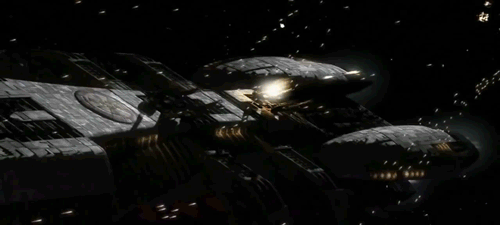
Point Defense and Offense Systems

Much like the ships that inspired her, the Alor-class heavily features a mixed arsenal of point defense emplacements. From over sized flak batteries, including multiple heavy and medium batteries bristling with cannon, to smaller and more numerous fast firing but lighter emplacements, the Alor-class is capable of projecting devastating fields of fire to protect herself and other nearby ships from hostile starfighter and missile attacks. Offensively, the weaponry of the Alor-class focuses heavily upon numerous large mass-driver cannons and assault grade missile tubes. While these weapons afford her a powerful impact in close quarters battles, they leave her unable to respond to the long range firepower of opposing warships and makes operating an Alor-class unescorted a dangerous gamble.
Thanks to the near total reliance of the design upon projectile and missile weapons, the Alor-class Dreadnought heavily relies upon a constant supply of fresh ammo. Capable of launching numerous missiles and projecting massive amounts of ammunition over the course of even a short engagement, much of the Alor-class's expansive cargo bay is dedicated to the storage of ordnance. To help facilitate the rapid reloading of her numerous weapon emplacements, the corridors leading from the cargo bay to the outer hull of the ship are exceptionally large. Along the ceiling and floors of these corridors, numerous small tractor beam and pressor beam emitters are installed upon a system of rails that run in a loop. The right side of the corridor is for the movement of cargo from the center of the ship to the exterior of the ship, while the left side is for returning empty crates to the cargo bay. Between engagements, the Alor-class relies upon a heavy logistical train of cargo ships to keep her supplied with enough ammunition to maintain combat operations. Should this logistical train be interrupted, an Alor-class Dreadnought will quickly find itself unable to engage opposition and be forced to withdraw to the nearest friendly port to rearm.
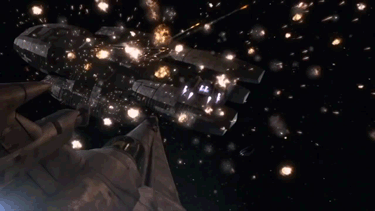
Missile Tubes and Launch Bays
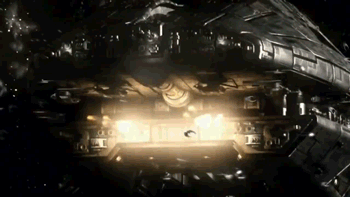
The Alor-class Dreadnought possesses numerous modular Flex-Tube Launcher Turrets placed throughout the hull. Though these large turrets are only capable of holding four missiles at a time, they are capable of turning to face targets within a far wider fire-arc than conventional torpedo tubes. Likewise, the design affords a larger internal storage area that would otherwise be possible and allows the turret to be rapidly reloaded with fresh ordnance in a number of minutes. Designed to support a wide range of ordnance options, these Flex-Tube launchers can fire Assault Concussion Missiles, Ram'or Assault Missiles, ACS Breacher Boarding Torpedos, Homing Cluster EMP Detonation Missiles, Advanced Homing Cluster Missiles, Homing Heavy Intruder Missiles, and a number of other options.
Along the ventral side of the Alor-class Dreadnought, a number of large circular blast doors dot the ship's hull. Capable of rapidly opening and closing, each of these circular doors serves as the cover for the hollow launch tube of a Drop Pod Launch Bay. Positioned in rows of three, each of these bays are capable of holding and launching only a single Drop Pod at a time. Reloaded via a system of rails that connects the one end of the launch bay to a nearby loading bay, the process of filling a fresh drop pod with infantry and/or cargo and moving it into position for launch can take as many as ten minutes. Primarily split into two rows, spaced unevenly apart and clustered in groups of three, these bays allows the Alor-class to indirectly aid a clan's ground war for a planet without resorting to bombarding an entire city from orbit. Though only one pod can be launched at a time, each bay holds a total six Drop Pods.

Praise the Sun!
This entry's image size has been fixed - courtesy of Whill Sul
This entry's image size has been fixed - courtesy of Whill Sul





 By my count i've used all 15 points, 14 for the ship plus one for hangars.
By my count i've used all 15 points, 14 for the ship plus one for hangars.